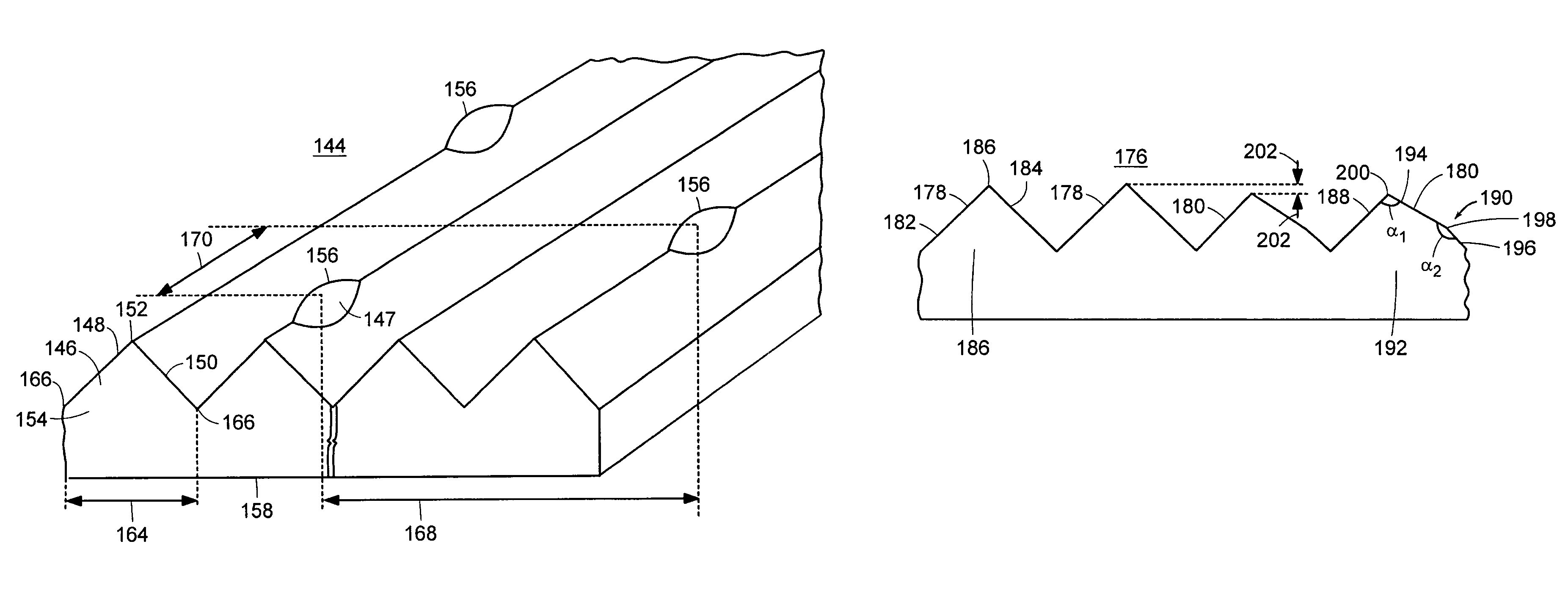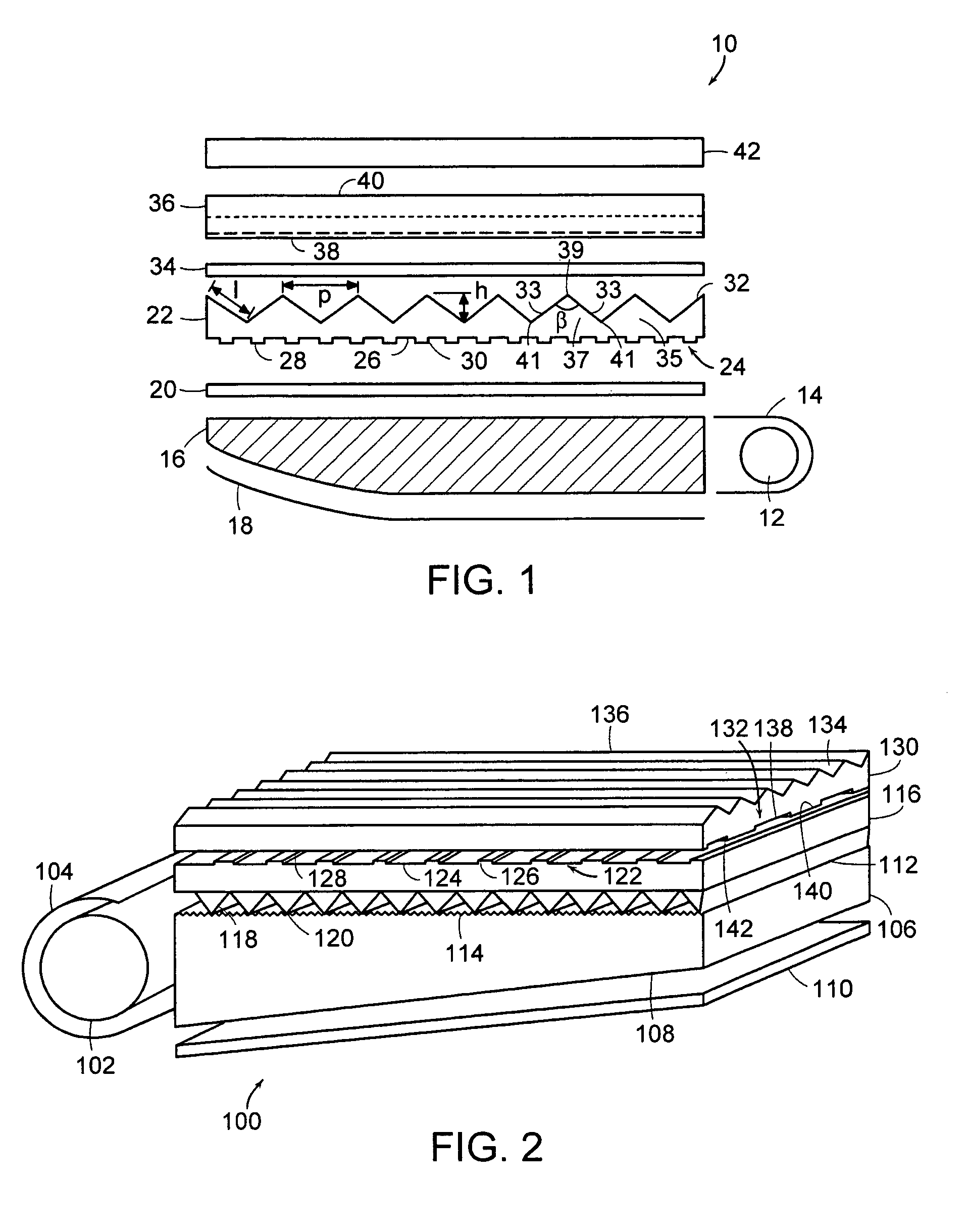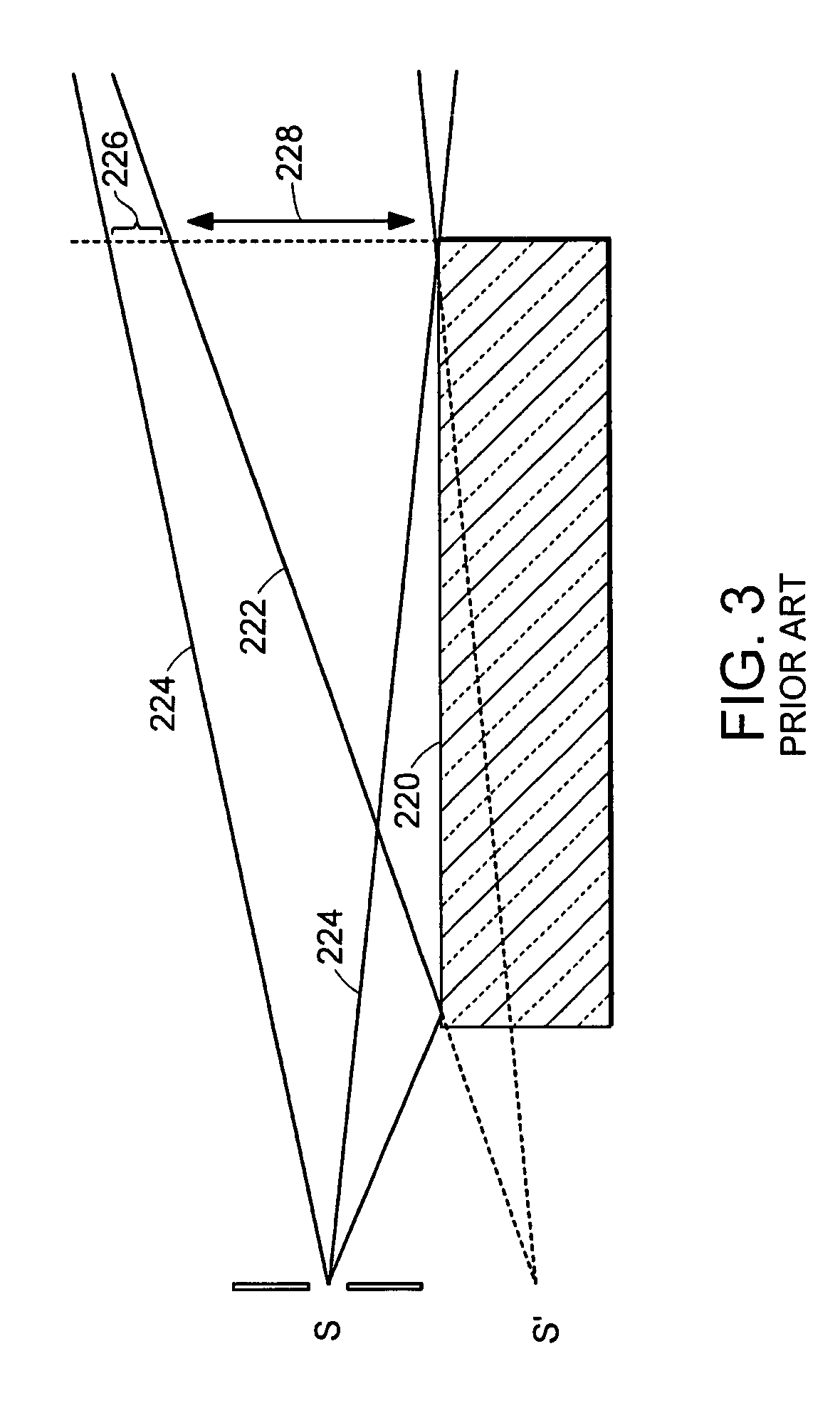Light-redirecting optical structures
a technology of optical structures and lenses, applied in the direction of instruments, lighting and heating apparatus, mechanical apparatus, etc., can solve the problems of optical film “wetting out”, defects that are often noticeable by the viewer, and defects in the lighting panel
- Summary
- Abstract
- Description
- Claims
- Application Information
AI Technical Summary
Benefits of technology
Problems solved by technology
Method used
Image
Examples
Embodiment Construction
[0033]A description of various embodiments of the invention follows. Often, the term optical “sheets” refers to a more rigid substrate, for example, one that could be leaned against a wall without folding over on itself, and the term optical “films” refers to a substrate that is more flexible, for example, one that could be rolled up. However, depending on the size and thickness of the sample, a film can act as a sheet. For example, a small, thin polyester film can be rigid enough to lean against a wall without folding over on itself. For purposes of understanding aspects of the present invention, the terms “sheet” and “film” can be used interchangeably. Sheets and films of the present invention can be formed from plastic material, such as, polyurethane, polypropylene, polyvinyl chloride, polycarbonate, polyester, polyurea, or polymethylmethacrylate. Polyurea is disclosed in U.S. Provisional Application No. 60 / 402,484, filed on Aug. 8, 2002, and U.S. patent application Ser. No. 10 / 6...
PUM
 Login to View More
Login to View More Abstract
Description
Claims
Application Information
 Login to View More
Login to View More - R&D
- Intellectual Property
- Life Sciences
- Materials
- Tech Scout
- Unparalleled Data Quality
- Higher Quality Content
- 60% Fewer Hallucinations
Browse by: Latest US Patents, China's latest patents, Technical Efficacy Thesaurus, Application Domain, Technology Topic, Popular Technical Reports.
© 2025 PatSnap. All rights reserved.Legal|Privacy policy|Modern Slavery Act Transparency Statement|Sitemap|About US| Contact US: help@patsnap.com



